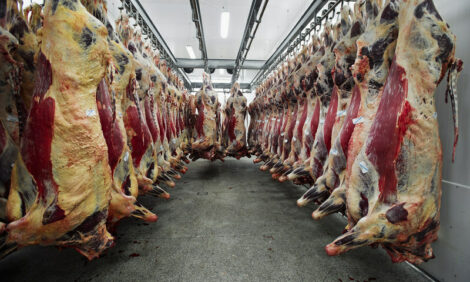



LMC Report: Tight Cattle Supplies
NORTHERN IRELAND, UK - Late last week and early this week, there has been an increase in cattle quotes, reflecting factory concerns about the availability of cattle for slaughter in Northern Ireland (NI). The slaughter statistics for the month of June provide a clear indication of declining availability, as it moves into holiday season. In June (five weeks ending 2 July 2011), the prime cattle kill in NI was 14 per cent lower compared to the same period in 2010. For the first half of the year, prime cattle supplies are five per cent lower than the same period last year. These reductions in the prime cattle kill reflect not just the number of NI origin cattle on the ground, but also reduced imports of store and finished cattle from ROI over the last six months. Developments in the export trade have also impacted availability.
This reduction in the kill would have been greater were it not for a large increase in the availability of cull cows at the factories. Steer slaughterings fell by three per cent while, heifer slaughterings were down by 13 per cent. Over the year to date, the steer and heifer kill is four per cent lower. However, the largest declines were in the bull kill, something that was expected earlier in the year.
Over the last number of years, there were larger numbers of male beef cattle kept entire and slaughtered earlier as young bulls as producers sought to benefit from the increased feed conversion efficiency associated with bull beef. Furthermore, fewer dairy bulls were exported to the continent in 2008-2009 and this also meant that more of these cattle were available in NI for slaughter in 2009-2010. However, the live export trade to the continent has been more active in the last 18 months, and with larger numbers having been exported under 42 days, fewer of these animals have been retained for local slaughter. The rising cost of intensive feeding has prompted producers to export dairy bulls or finish male beef cattle as steers.
As a result of these developments, the young bull / calf kill is 10 per cent lower (-4,000 head) over the course of the year to date. In June this decline has accelerated. In June, the young bull / calf kill was 30 per cent lower than the same five week period last year.
The mature bull (over 24 months) kill was also significantly lower this June, with a 51 per cent reduction compared with the same period last year. The decline for the year to date is 27 per cent. The majority of these animals are not stock bulls, but animals that have been reared for slaughter and have been fed beyond 24 months. The reduction in the numbers of these animals reflects the general reduction in the availability of bulls for the reasons outlined above. Such a reduction in the number of mature bulls in the slaughter mix is to be welcomed since the beef from these animals is out of spec by most mainstream definitions given the potential for it to be of questionable quality.
Higher Cow killWith high cull cow prices, the June cow kill was 46 per cent higher than the same period last year and is 11 per cent higher for the year to date. The increased cull may be a reflection of these higher prices and an increased number of heifers retained as replacements in 2010.
Further Reading
| - | You can view the full report by clicking here. |
TheCattleSite News Desk


